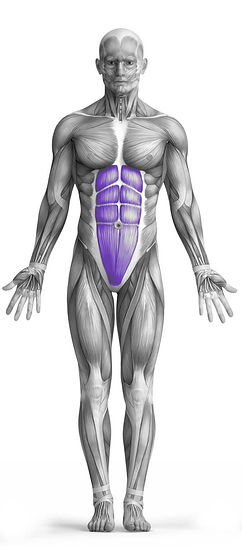One-Leg Lying Cable Knee Raise 101 Video Tutorial
0

Exercise Synopsis
Target Muscle Group
Abs
Secondary Targets
None
Execution
Compound
Force Type
Pull
Required Equipment
Cable Machine
Fitness Level
Beginner
Variations
None
Alternatives
None
Timer
Hour
Minute
Second
Stopwatch
00:00:00:00
Overview
The One-Leg Lying Cable Knee Raise is an effective exercise designed to target the abdominal muscles, particularly the lower abs. To perform this exercise, you lie on your back while attaching an ankle strap to a low cable machine. As you pull the strap with one leg, you raise that leg toward your chest while keeping your core engaged. The movement should be controlled and deliberate, focusing on using the abs to lift the leg rather than relying on momentum. This exercise requires only a cable machine, making it an efficient option for targeting the core.
How to Perform
Set up the bench and cable machine: Position a flat bench approximately 3 feet in front of a low pulley cable machine, with the bench aligned lengthwise to the machine.
Attach ankle strap: Secure an ankle strap to the cable machine and adjust the weight to your preferred level.
Position the ankle strap: Stand facing the cable machine and wrap the ankle strap around one ankle, ensuring it is securely fastened.
Sit on the bench: Sit on the bench with your hips near the edge, ensuring you’re facing the machine. Place your hands on the edge of the bench behind your head for support.
Lie back: Lean back on the bench, keeping your core engaged for stability, and position your legs extended with the strap around your ankle.
Lift your leg: Begin by slightly raising your knee to take the tension off the weight stack. Then, slowly raise your leg, focusing on contracting your abdominal muscles to bring your knee as close to your chest as possible.
Pause and lower: Hold the raised position for a brief moment, then lower your leg back to the starting position in a controlled manner.
Maintain tension: Ensure that the weight does not touch the stack during the entire set, keeping continuous tension on your core muscles throughout the movement.
Focus on form: Perform the movement slowly and deliberately, avoiding any jerking or swinging. The focus should be on controlled leg raises powered by the abs, not by momentum.
★ Bonus: For exercises that involve external weights (such as dumbbells, barbells, or machines), the One Rep Max (1RM) calculator can help you estimate your maximum lifting capacity. Use it to track your strength progress and adjust your training for optimal results.
Tips
Slow down the movement: To make the exercise more challenging, reduce the speed of your leg raise, focusing on a deliberate, controlled motion.
Pause at the top: At the peak of the movement, hold your leg up for a longer period before slowly lowering it back down. This extra pause increases the time under tension for your abs, enhancing muscle engagement.
How Not to Perform
Avoid using momentum: Do not jerk or swing your leg to raise it. Focus on controlled, smooth movements to ensure the effort comes from your abdominal muscles rather than momentum.
Don’t arch your back: Keep your lower back pressed into the bench to avoid unnecessary strain. Arching your back can lead to injury and reduces the effectiveness of the exercise on your abs.
Don’t let your legs dangle: Ensure that your legs are fully extended before you begin the movement. Allowing your legs to dangle or hang loosely can cause instability and disengage the core muscles.
Avoid lifting too high: Don’t overextend your leg or raise it higher than your range of motion allows. Lifting too high can strain the hip flexors and take the focus away from the abs.
Don’t let the weight touch the stack: Keep the tension constant on your abs by ensuring the weight stack never fully rests during the set. Letting the weight touch the stack reduces the effectiveness of the exercise.
Don’t rush the movement: Performing the exercise too quickly can cause you to lose focus on the abs and rely on momentum. Move slowly and deliberately to keep your abs engaged throughout.
Avoid holding your breath: Breathe consistently during the movement. Holding your breath can lead to unnecessary tension in your body and reduce performance. Exhale while lifting the leg and inhale while lowering it.
Don’t neglect proper ankle strap placement: Make sure the ankle strap is securely fastened to your ankle before starting. An improperly placed strap can cause instability and lead to incorrect form.
Variations
Variations of fitness exercises refer to different ways of performing a specific exercise or movement to target various muscle groups, intensities, or goals. These variations aim to challenge the body differently, prevent plateaus, and cater to individuals with varying fitness levels.
Alternatives
Alternative exercises in fitness refer to different movements or activities that target similar muscle groups or serve the same training purpose as the primary exercise. These alternative exercises can be used as substitutes when the original exercise is unavailable or challenging to perform due to various reasons such as equipment limitations, injuries, or personal preferences.








